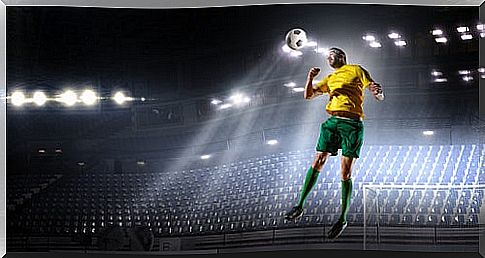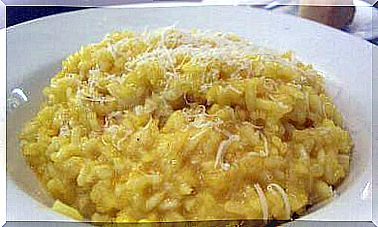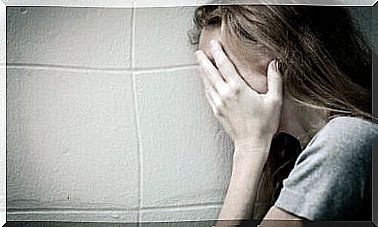Playing Ball With The Head Can Cause Brain Damage
Several studies alert us to the danger involved in the action of hitting the ball with the head on a regular basis. Soccer players, for example, could suffer significant brain damage.

On many occasions, during a soccer game, we see risky plays and all kinds of feats. Also, you can see how the players hit the ball with their heads at certain times. Seeing this, many can’t help but wonder: can doing that lead to brain damage?
Well, the truth is that yes. Research has shown that hitting a ball with the head can cause brain damage in players. Especially if a lot of force is used.
When we see players hitting the ball with their heads, we have to know that this increases the risk of brain injuries. That has been the conclusion of the Radiological Society of North America.
Research and studies on brain damage

One of the first references to these dangers was made by researchers from Albert Einstein College, the Department of Medicine at Yeshiva University and the Montefiore Medical Center (United States).
In this study on brain damage, 37 amateur players, aged 30.8 years on average, who played soccer as children were followed .
The classification of these players was made based on the frequency with which they cleared or headed in the last year.
- The researchers compared the brain images of the players.
- For this, advanced imaging techniques were used, such as magnetic resonance imaging with tensors.
- With this test you can look at neural tracts, perform cognitive tests, and much more.
Research results

After comparing and evaluating the results, the experts found that the players who touch the ball the most with their heads tend to have injuries and brain damage more frequently. They are also at increased risk of concussion, known as traumatic brain injury.
The results of these and other similar studies have been published in specialized journals, such as Neurology , and have been described as “especially worrying”.
Soccer is a very popular sport worldwide. As far as the United States is concerned, it is a practice that does not have much tradition.
However, little by little it has been gaining many followers in recent years. Of the 18 million Americans who play soccer, 78% are under the age of eighteen.
Details of the studies carried out
A soccer ball can reach speeds in the game in excess of 50 kilometers per hour. And that at the amateur level; in international matches or competitions, the speed of the ball may be doubled.
- The purpose of the study carried out, according to medical director Michael Lipton, was to find out if there is a level, a threshold above which the blow with the head of the ball can lead to brain damage.
- Some data indicate that this kind of “frontier”, or that threshold, would be around 1000 or 1500 headbutts per year. Once this figure is exceeded, it is understood that it can be dangerous.
When buying footballers with other athletes, such as swimmers, the brains of the latter are kept in perfect condition after the performance of the sport. However, abnormalities in the nerve fibers of the white matter are discovered in the brains of soccer players.
The explanation is that nerve cells transmit their messages from one to another through nerve fibers or axons. When the brain is frequently violently shaken, the person may have a disruption in the nerve fibers.
Repeating head touches
Simply hitting a soccer ball with the head is not of sufficient magnitude to damage the nerve fibers of the brain. It may even seem an exaggeration to speak of brain injury from this.
The problem is when it is done too repeatedly. The repetition of these events may lead to a series of chain responses, which will lead to the degeneration of brain cells.
The affected areas
The areas of our brain most affected by this practice are the frontal lobe (behind the forehead) and the temporal-occipital region (areas in the lower back). These would be responsible for attention, memory, executive function and some visual functions.
Memory tests

Another study carried out in 2016 tested the same soccer players to assess their neuropsychological function.
In this way, the players who hit the ball more frequently with the head achieved worse results in the tests of verbal memory and psychomotor speed, compared to their peers.
Researchers have found that the different studies cited show “good evidence” that frequently hitting a soccer ball with the head can cause brain injury.
This would be a base, a starting point for planning future research to develop protection systems and elements for soccer players.
Symptoms of these brain damage
As we have already seen, these repetitive and violent shaking can cause cognitive symptoms. Among them are memory problems, as well as behavioral and mood disorders, such as anxiety and depression. Likewise, problems with sleep, dizziness and headaches can also arise.









